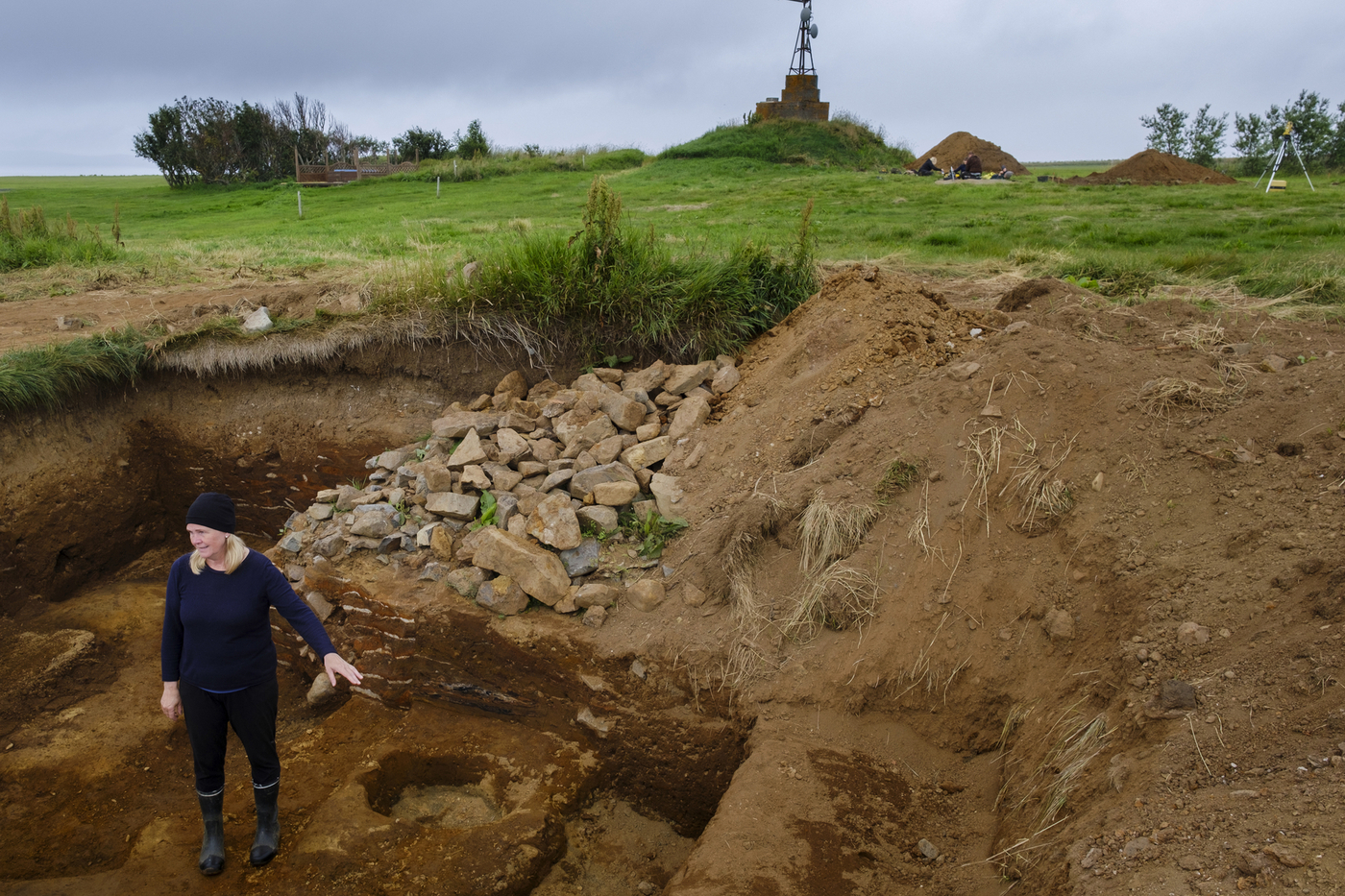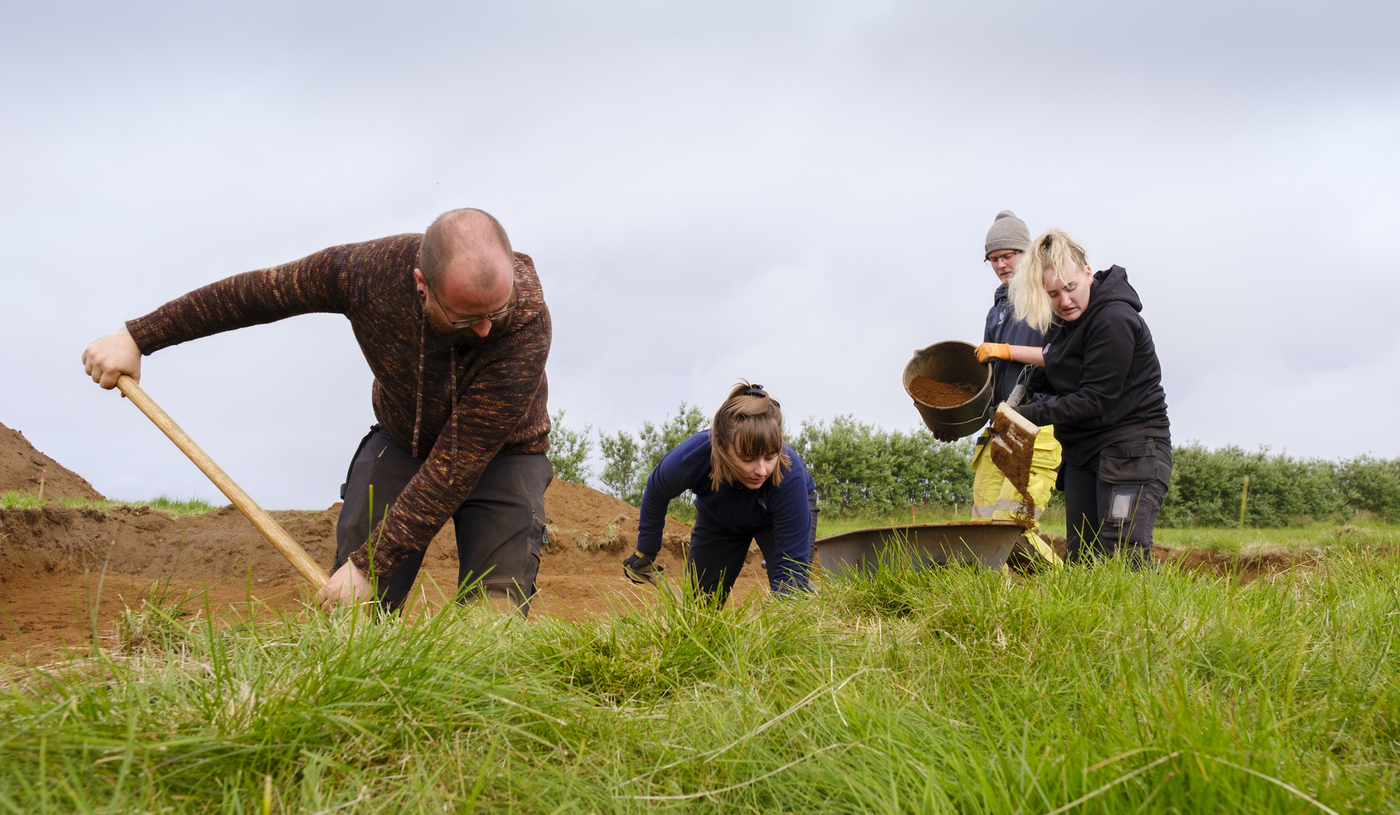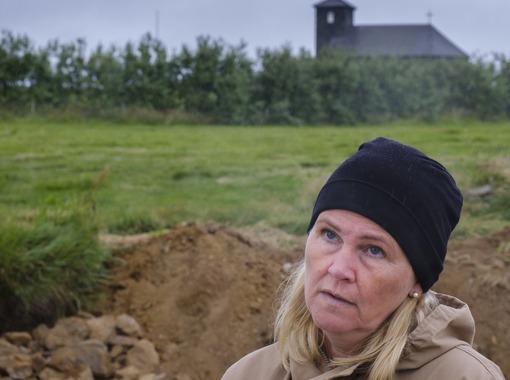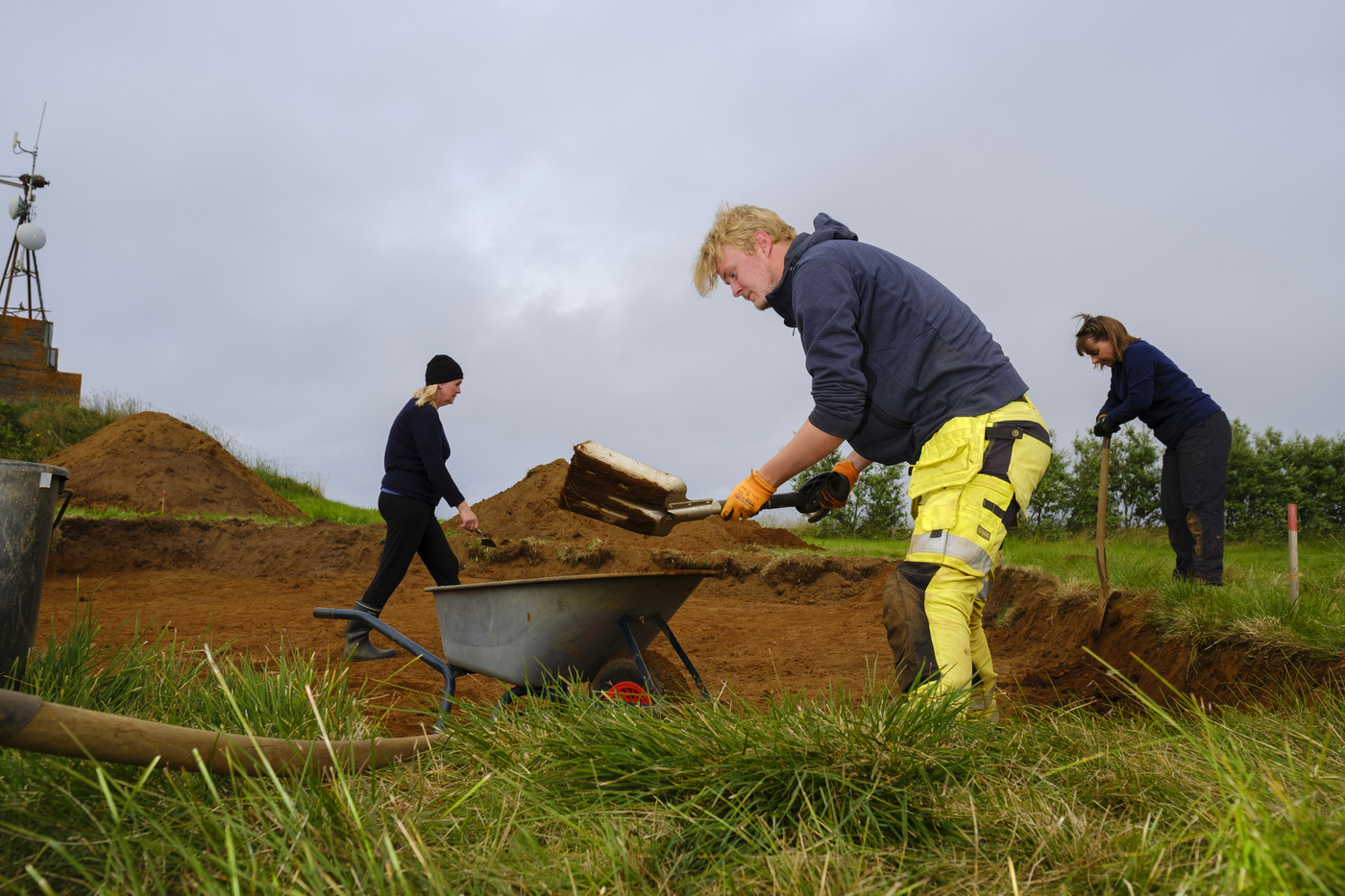A gold ring and a couture hat from the 17th century are among the relics archaeology students and scientists at the University of Iceland have excavated this summer from the ruins of Þingeyri, the home of the longest running monastery in Icelandic history. The aim of the excavation is to shed light on book production at the monastery; using in part tools and gadgets shared by the archaeology department and the University's geologists.
Þingeyrarklaustur, the monastery at Þingeyri, was established in 1133 and operated continuously until 1551 when the Reformation swept through Iceland and the grounds and monastery quarters became property of the Danish king. "We are searching for traces of monasticism here and especially the literary tradition. Þingeyraklaustur was a famous centre of literature, culture and education, and was known for its library, and we are looking for traces of the literary tradition," says Steinunn.
The focus is not only for traces of the books themselves but the whole production, from the breeding of cattle until its skin becomes a book. "We are, furthermore, examining the interplay of humans versus nature, the impact of the book production on the environment and the societal impact, and by that I am referring to black death and how it affected the production," says Steinunn on the research focus.

Steinunn J. Kristjánsdóttir at Jón Þorleifsson grave found last summer.
Multi-year project to reach the monastery relics
The excavation is a part of a larger project supported by a fund called Ritmenning íslenskra miðalda. The fund aims at strengthening research on literature on the sites where medieval manuscripts were written in Iceland, and especially centres of learning and monasteries where writing culture blossomed, like at Þingeyri.
Steinunn says that around 20 books have been preserved that were produced at ÞIngeyri, but clearly more were made there, and production was lively. An average of 100 calf skins were needed for one medieval manuscript so breeding cattle was a large part of medieval learning centres.
"The challenges we face in this excavation is the extent of the population for more than a thousand years," Steinunn points out and adds that bones have been carbon dated from the place that seems to be a cemetery or at least from Christian graves dating prior to monastery operations.
"It has thus taken us a long time to get to the monastery remnants as there are so many relics on top of them," says Steinunn. "Only this summer, our third one, did we get to relics from the monastery.

Four students have worked on the project with Steinunn this summer
A gold ring and a couture hat have been excavated
This is a vast project, but valuable items have already been found. "This summer we found a grave from one of the abbots here, Jón Þorleifsson, where we found a gold ring, a so-called signet ring. Jón was also buried with a hat that was very much in fashion among the gentry at that time," says Steinunn and is referring to the latter half of the 17th century as Jón was buried in 1683. This find is considered among the more important archaeology findings in recent years but this excavation had previously produced a church comb monks used for religious purposes with a part of a shoe, prayer beads and prune stones from monastery times.
"We focus on the interaction between humans and nature in this project and I believe we can learn various things from the past. What was the impact of large stock on nature," says Steinunn and points out comparable research in our neighbouring countries. "Our research on the effects from Black Death around 1400 can likewise bring us knowledge that we can mirror and use in connection with recent epidemics, such as COVID-19. It is, furthermore, simply important for us as a nation to know our past and history,"

A virtual library
An excavation on this calibre creates an exciting opportunity for University students and the doctoral student Sigrún Hannesdóttir, the master student Ómar Valur Jónsson and the BA students Almar Smári Óskarsson and Klara Ósk Gunnarsdóttir are part of the team. The last mentioned was working on an innovation project funded by the Student Innovation Fund this summer to create a virtual library for Þingeyrarklaustur.
"We want to be able to communicate to the public, so we have been setting up a library in the same fashion as we believe it was at the monastery. People will then be able to walk into a room where the books were kept, just like in a computer game, pick up a book of their own choice and examine it; what it was about etc.," says Klara.
She points out that at the time of the monastery there probably were no bookshelves and the books thus kept in chests or caskets with other things. "Because of this we decided to check out chests at the National Museum from a the same period. That way we can visualise how the books were displayed and tried to do this as authentically as possible," says Klara who simply learned coding and three-dimensional design in order to create this world that will be made accessible on the project's Facebook page.
A unique collaboration with the Institute of Earth Sciences
The new Strategy of the University of Iceland, HÍ26, places great emphasis on interdisciplinary collaboration and sharing infrastructure and equipment. Steinunn and her colleagues have a long experience in this. "We have had a fruitful collaboration with the Institute of Earth Sciences, especially Ármann Höskuldsson. The Department of Archaeology and the Institute of Earth Sciences own equipment we have bought together, and the institute of Earth Sciences has also loaned us their equipment," says Steinunn and adds: "I feel there is a lack of understanding concerning the cost of archaeology research, especially regarding equipment, so collaboration with other University institutes is vital; such as ours with the Institute of Earth Sciences.
The Department of archaeology also collaborates with Egill Erlendsson, professor of environmental science at the University of Iceland, especially concernng the analysis of pollen and vegetation. Furthermore, Gottskálk Þór Jensson, research associate professor at the University of Copenhagen Department of Nordic Studies and Linguistics, and guest professor at the University of Iceland, leads the part of the project connected with the literary traditions in connection with the manuscripts from Þingeyrarklaustur.
What is the significance of research such as these for modern society? "We focus on the interaction between humans and nature in this project and I believe we can learn various things from the past. What was the impact of large stock on nature," says Steinunn and points out comparable research in our neighbouring countries. "Our research on the effects from Black Death around 1400 can likewise bring us knowledge that we can mirror and use in connection with recent epidemics, such as COVID-19. It is, furthermore, simply important for us as a nation to know our past and history," concludes Steinunn.




